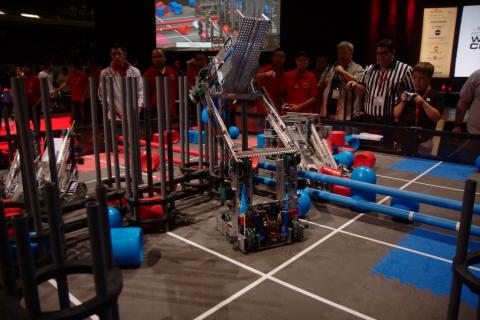After the first version of the robot is complete it is time to test it. Some questions for the students to consider while testing:
- Does the robot complete tasks in the desired manner?
- Is it fast enough?
- Is it robust enough, or are parts of it breaking or coming apart during use?
- Does the robot achieve the goals that have been set forth by the design team?
- Can it score enough points to consistently win matches?
- Is it easy to control?
After answering these questions, students should identify what areas they need to improve upon. At this point they should prioritize the improvements and begin working on the most pressing changes. Beware, it may seem like a good idea to change multiple things at once, but this could introduce a whole new set of problems.
It is best to approach improvements in a systematic and logical way; students should take detailed notes in their engineering notebooks during this part of the process.
- What is being tested?
- What results were observed?
- What could be done to improve the results?
- Are the results acceptable or is it worthwhile to make improvements?
- After completing this process, students should test the robot again asking the same questions.
- Repeat: Design is an iterative process!
Once the students are satisfied with their completed robot, it’s time to get ready to compete.

